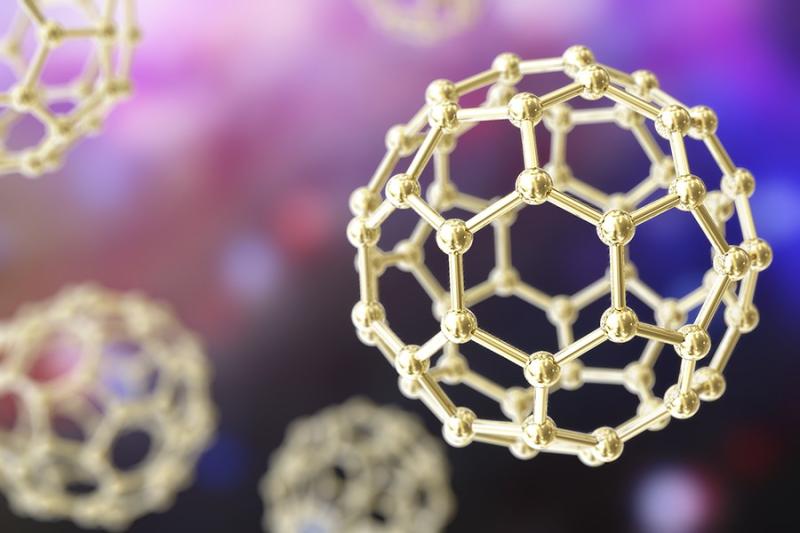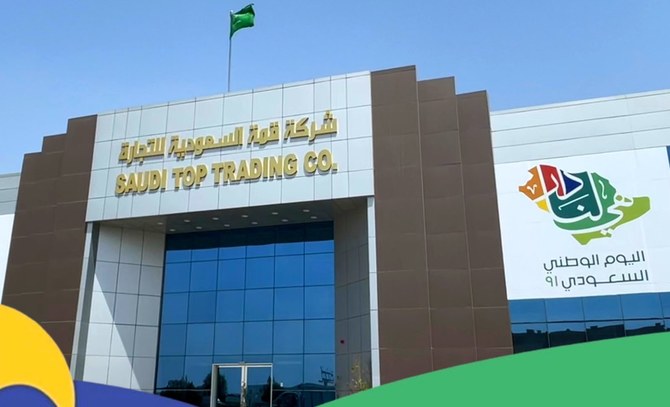Saudi Arabia’s scientific and industrial ecosystem is rapidly evolving, and at the heart of this transformation lies one of the most dynamic fields in modern materials science nano metal oxides. By 2031, the Saudi nano metal oxide market is projected to reach an impressive value of $7.4 billion, driven by breakthroughs in advanced manufacturing, the surging demand for high-performance materials, and expanding applications in food, beverages, and nutrition sectors. This remarkable growth story reflects the Kingdom’s unwavering commitment to innovation, diversification, and sustainability, aligning closely with the goals of Vision 2030.
Over the past few years, the nation has made major strides in developing technologies that bridge the gap between nanoscience research and industrial application. With key players investing in production facilities, research centers, and partnerships with global tech institutions, Saudi Arabia is steadily positioning itself as a global hub for nano material production. The growing interest in aluminum oxide, titanium dioxide, and zinc oxide nanoparticles underscores the region’s strong appetite for smart materials that enhance product efficiency, longevity, and performance.
Market Overview: A Surge in Demand Across Industries
The Saudi nano metal oxide market has entered a new phase of accelerated expansion, shaped by both domestic innovation and global demand. From energy storage to cosmetics, from healthcare to packaging, nano metal oxides are now a central element of technological progress. Aluminum oxide nanoparticles, in particular, are emerging as a frontrunner due to their exceptional thermal stability, electrical insulation, and corrosion resistance, making them essential in coatings, catalysts, and electronics.
At the same time, titanium dioxide and zinc oxide nanoparticles are witnessing widespread adoption in the food and beverage sector. These materials are valued for their ability to act as antimicrobial agents, UV protectants, and nutrient stabilizers. As the Kingdom’s food and nutrition industries modernize, nano metal oxides are increasingly used to enhance shelf life, improve safety standards, and fortify products with essential minerals. This combination of scientific innovation and commercial demand is reshaping Saudi Arabia’s material sciences landscape.
The growth trajectory is also supported by government-led initiatives encouraging advanced research in nanotechnology, environmental sustainability, and biotechnology. Public and private partnerships are enabling new startups and universities to work together, ensuring that Saudi Arabia not only imports cutting-edge technologies but becomes a leading exporter of nanomaterial expertise.
Aluminum Oxide: The Dominant Force in Saudi Arabia’s Nano Market
Among all nano metal oxides, aluminum oxide (Al₂O₃) stands out as the market leader in Saudi Arabia’s growing materials ecosystem. Its versatility allows it to be used in a wide range of applications, from aerospace engineering to biomedical devices. Aluminum oxide’s strength, wear resistance, and biocompatibility make it one of the most sought-after nanomaterials globally, and Saudi Arabia is strategically capitalizing on this demand.
The metal’s wide availability in the region and its compatibility with the Kingdom’s industrial infrastructure have accelerated its production and research potential. Aluminum oxide nanoparticles are being integrated into advanced coatings that protect machinery and vehicles from corrosion and extreme heat, enhancing energy efficiency and reducing maintenance costs. In the energy sector, aluminum oxide is used to develop more efficient fuel cells and energy storage solutions, both vital for Saudi Arabia’s renewable energy vision.
Additionally, Saudi universities and R&D centers are delving into the use of aluminum oxide in medical and pharmaceutical applications, exploring its potential in drug delivery systems and biosensors. This multidisciplinary approach has not only strengthened the market’s technological foundation but has also inspired a new generation of Saudi researchers to pioneer sustainable and impactful innovations.
Food, Drink, and Nutrition: The Next Frontier of Nano Innovation
Perhaps the most exciting evolution in Saudi Arabia’s nano metal oxide market is happening in the food, drink, and nutrition sector. As consumer awareness of health, safety, and quality continues to grow, industries are seeking smarter materials that ensure purity, freshness, and enhanced nutritional value. Nano metal oxides, particularly zinc oxide and titanium dioxide, have become vital tools in this pursuit.
Zinc oxide nanoparticles, known for their antimicrobial properties and nutritional benefits, are increasingly being incorporated into food packaging to prevent bacterial contamination and extend shelf life. Titanium dioxide, on the other hand, is being used in food coatings and additives to improve appearance and stability while maintaining safety standards. These applications highlight the convergence of nanotechnology and food science, a combination that promises to revolutionize how food is produced, stored, and consumed in Saudi Arabia.
The growing demand for fortified and functional foods has also created new opportunities for nano-based nutritional supplements. Nano zinc and nano iron, for example, offer enhanced bioavailability, allowing nutrients to be absorbed more efficiently by the human body. This innovation directly aligns with Saudi Arabia’s broader focus on public health, wellness, and preventive nutrition.
As these technologies gain traction, Saudi regulators and researchers are actively working to ensure that safety and transparency remain top priorities. The establishment of standardized testing and monitoring protocols reflects the country’s commitment to balancing innovation with consumer protection.

Research and Development: Fueling a New Era of Discovery
Saudi Arabia’s investments in nanotechnology R&D have increased exponentially over the last decade. The Kingdom’s universities, including King Abdullah University of Science and Technology (KAUST) and King Saud University, have become leading centers for materials research. These institutions are not only advancing academic understanding but also developing practical industrial applications that drive the economy forward.
Collaborative projects between academia, startups, and major corporations are enabling breakthroughs in nano metal oxide synthesis, surface modification, and large-scale production. The ability to engineer materials at the atomic and molecular level has opened pathways for creating high-performance catalysts, sustainable coatings, and next-generation sensors.
Moreover, the Saudi government’s support through funding programs and technology incubators has empowered a growing number of local innovators to explore commercial opportunities in nanoscience. This ecosystem of collaboration and curiosity has made Saudi Arabia one of the most promising regions for scientific entrepreneurship in the Middle East.
Economic Impact: Driving Industrial Transformation
The forecasted $7.4 billion market size by 2031 is not just a numerical target, it symbolizes the growing economic diversification and scientific confidence of Saudi Arabia. The nano metal oxide industry has far-reaching implications for multiple sectors, from oil and gas to construction and agriculture.
For example, in the petrochemical sector, nano oxides are enhancing catalyst efficiency, reducing waste, and enabling cleaner production processes. In construction, nano titanium dioxide is being used in self-cleaning and pollution-reducing materials, contributing to more sustainable urban environments. In agriculture, nano zinc oxide fertilizers are improving crop yield and resilience, aligning with the Kingdom’s food security goals.
These cross-industry applications are stimulating investment, creating high-value jobs, and nurturing a new generation of materials scientists and engineers. Saudi Arabia’s focus on advanced materials manufacturing not only strengthens its domestic industries but also boosts its global competitiveness as a supplier of innovative, eco-friendly solutions.
Sustainability and Environmental Innovation
One of the most important aspects of Saudi Arabia’s nano metal oxide journey is its alignment with sustainability goals. As part of Vision 2030, the country is investing in cleaner production technologies and green chemistry principles to reduce the environmental impact of manufacturing.
Nano metal oxides play a critical role in this transformation. Their use in photocatalytic coatings, air purification systems, and water treatment technologies demonstrates how nanoscience can address pressing environmental challenges. Titanium dioxide nanoparticles, for instance, are used in coatings that can break down pollutants under sunlight, improving air quality and reducing maintenance costs in public infrastructure.
In the energy domain, nano oxides contribute to improving battery performance, hydrogen production, and carbon capture systems. These innovations are vital for Saudi Arabia’s transition toward renewable energy and circular economy models. By fostering research in these areas, the nation is not only embracing sustainability but actively shaping global green technology trends.

Challenges and the Road Ahead
Despite the optimism surrounding Saudi Arabia’s nano metal oxide market, several challenges must be addressed to ensure long-term success. The primary hurdles include the high cost of advanced nanomaterial production, regulatory complexities, and the need for a skilled workforce capable of operating in highly technical environments.
The Kingdom is already taking proactive steps to overcome these barriers. Government programs aimed at training young scientists, establishing international collaborations, and encouraging private sector participation are gradually bridging the skill and infrastructure gap. As the industry matures, improvements in manufacturing efficiency and scale are expected to lower production costs and enhance market accessibility.
The path ahead is filled with promise. By maintaining a balance between innovation and regulation, Saudi Arabia is set to build a robust framework that not only supports industrial growth but also ensures ethical and sustainable deployment of nanotechnologies.
Vision 2030: Nanotechnology as a Catalyst for National Progress
Saudi Arabia’s Vision 2030 outlines an ambitious plan to diversify its economy and become a global leader in science and technology. The nano metal oxide industry is a perfect reflection of this vision, a field that combines research excellence, industrial modernization, and international collaboration.
By focusing on materials that enhance energy efficiency, environmental sustainability, and human health, Saudi Arabia is turning nanotechnology into a pillar of its innovation-driven economy. The country’s growing expertise in nano metal oxides is expected to inspire similar advancements across the wider Middle East and beyond.
As industries integrate these technologies into everyday applications, from construction materials to food packaging, the benefits will ripple across the economy. More efficient processes, reduced environmental footprints, and enhanced product quality will define the next era of Saudi industrial success.
Conclusion: A Future Built on Innovation and Discovery
The Saudi nano metal oxide market stands as a testament to what visionary leadership, scientific ambition, and strategic investment can achieve. With a projected market value of $7.4 billion by 2031, the nation is on a clear trajectory toward becoming a global powerhouse in nanomaterials.
Led by aluminum oxide and powered by new applications in food, drink, and nutrition, this sector embodies the spirit of innovation that drives Saudi Arabia’s economic transformation. From laboratories to manufacturing plants, the momentum is unmistakable, a future where nanotechnology not only supports industrial growth but also enhances quality of life, sustainability, and scientific prestige.
Saudi Arabia’s journey into the world of nano metal oxides is more than a market story, it is a national narrative of progress, resilience, and boundless potential, one that promises to redefine the country’s technological landscape for decades to come.
Do follow Gulf Magazine on Instagram.
Also Read – Saudi Arabia’s Pet Food Market Booms with Health Driven Growth Trends



